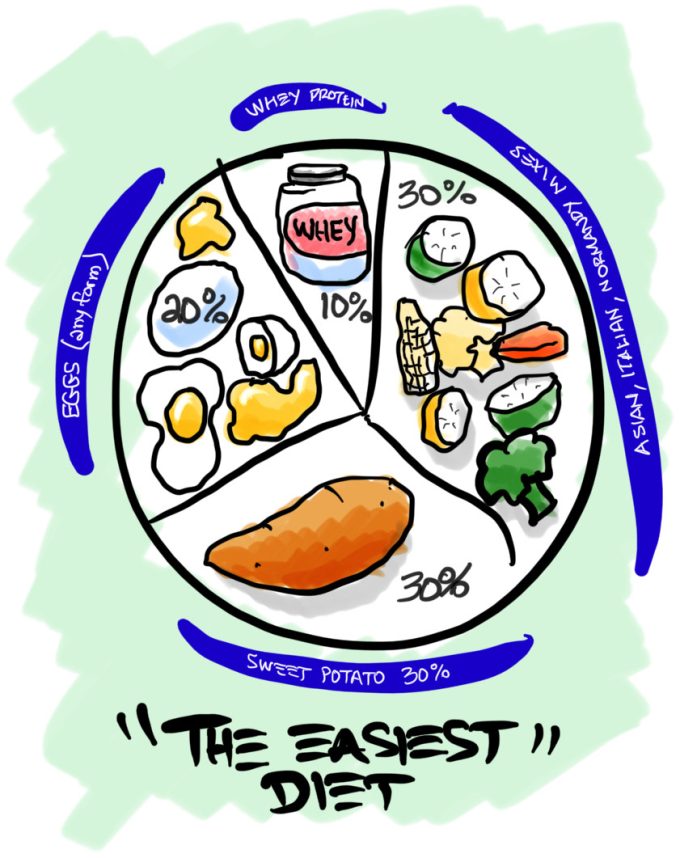Diets for dogs with kidney impairment, cardiac insufficiency, and or pancreatitis.
Diets for these types of cases would be low in sodium, low in fat, and high in albumin-globulin type proteins.
CONDITION | DIET MODIFICATION |
Cardiac Insufficiency | Low Sodium, Low Fat to Reduce Body Weight |
Pancreatitis | Extremely Low Fat Diet Desired |
Kidney Impairment | Less Protein of MUCH Higher Quality |
Pancreatitis & Kidney Disease in Dogs
- We measure the function (AND disease) of Kidneys with “enzymes” we find in the bloodtesting.
- Kidney Disease Values: BUN and CREATININE
- We measure the function (AND disease) of the Pancreas with different ‘enzymes’ in the bloodtesting.
- Pancreas Disease Values: AMYLASE and LIPASE and a unicorn-fictional-value called PSL.
Confoundingly, with declining KIDNEY function we can see RISING Pancreatic enzymes. So some of the “kidney dogs” look like they have pancreas trouble – without pancreatic disease at all.
So when you get a dog with high kidney AND high pancreatic enzymes – you have to take the pancreas issues “with a grain of salt.”
- BUN 57
- CREAT 1.8
- AMY 1500
- LIP 800
- The above kidneys are “not that bad” so it can be figured that the pancreas really is acting-up.
In “full on” kidney failure you will most-probably see elevations in Pancreatic enzymes Amylase, and Lipase. However, with borderline kidney function, Amylase and Lipase can remain within normal range.
Whether you know exactly how these organs are sharing their impacts on bloodtesting or not, is OKAY though, because even if you’re “off” in your assessment – You can’t go wrong recommending a HIGH QUALITY PROTEIN diet – to spare the kidney. And a LOW FAT diet to spare the Pancreas.
You win on both counts.
LOW CARB HEALTH DIET | REGULAR CARB HEALTH DIET |
A good diet for overweight pancreatitis and kidney disease patients uses Whey protein, Egg protein, and specific kinds of mixed-vegetables if you're feeding very-low-carbs. | A good diet for proper-weight pancreatitis and kidney disease patients uses Whey protein, Egg protein, Sweet Potato and the usual mixed-vegetables if you're feeding "regular". |
- A good diet for pancreatitis and kidney disease uses Whey protein, Egg protein, and SPECIFIC types of mixed-vegetables if you’re feeding very-low-carbs because the dog might be overweight.
- A good diet for pancreatitis and kidney disease uses Whey protein, Egg protein, Sweet Potato and regular mixed-vegetables if you’re feeding “regular” because the dog is NOT overweight.
The difference really, is the CARBS.
Neither diet has any fat in it, practically speaking. The eggs are “whole eggs” with yolks and DO have fat in them but not enough to matter to a dog with pancreatitis. And, dogs and cats need SOME fat for proper ‘fat soluble vitamin’ metabolism. (And absorption)
The diet is composed two ways, one is suitable for dogs getting carbs and WITHOUT a weight problem.
The other way to make this type of diet, is better for dogs that are overweight. Making it with NO carbs, then.
Diet LOW CARB
BASIC IDEAS:
There are about 8 eggs in a pound.
There are only FOUR mixed-vegetable mixes that are carb-restricted:
1) Asian-Stir-Fry 2) “Normandy Mix” 3) Italian Mix 4) Mediterranean Mix
If you’re into “home made” veggie mixes, here are the “good ones” – Brocoli, Cauliflower, yellow squash, zuchhini, bamboo, water chestnuts, green beans
And here are the “bad” ones with carbs: Corn, Potato, Lima and black beans, Peas.
I’m “on the fence” about carrots.
You can and probably should magnify this diet as you wish:
LOW CARB KIDNEY/PANCREAS/HEART DIET:
- 8 whole eggs hard-boiled, used with shell on, or off. Egg shell is good for dogs.
- 4 ounces powdered Whey Protein (Vanilla or unflavored “100% pure whey protein” like at GNC)
- 12 ounces Normandy mix vegetables
- Any dog getting this should also be on a Flintstone Complete Vitamin or similar dog-vitamin like DynoVite.
- Since there is no soluble fiber in this, you should put a teaspoon per twenty-pounds of dog – of Chickory Root Inulin (FOS) on the food as fed at least one feeding a day.
Two Pounds Low Carb Pancreas & Kidney Diet | |
Whole Eggs Boiled | 8 Large Eggs |
Normandy Mix Vegetables | 12 Ounces |
100% Whey Protein (Plain or Vanilla NO Sugar) | 4 Ounces |
Vitamins or Probiotics | Flintstone Complete Vitamin or similar dog-vitamin like DynoVite. |
Source of Soluble Fiber (Important) | |
Feed 1/2 Cup Per Ten Pounds of Dog Twice a Day - Watch Weight Closely - May Drop | |
REGULAR CARB KIDNEY/PANCREAS/HEART DIET:
- 8 whole eggs hard-boiled, used with shell on, or off. Egg shell is good for dogs.
- 2 ounces powdered Whey Protein (Vanilla or unflavored “100% pure whey protein” like at GNC)
- 6 ounces Practically any mix vegetables (CAN include Corn, Potato, Lima and black beans, Peas.)
- 8 ounces Sweet Potato with skin. (Will not need FOS then)
- Any dog getting this should also be on a Flintstone Complete Vitamin or similar dog-vitamin like DynoVite.
2 Pounds Regular Carb Pancreas and Kidney Diet | |
Eggs | 8 Large Eggs Boiled with or without Shells |
Whey | 2 Ounces |
Any Mix Vegetables | 6 Ounces |
Sweet Potatoes | 8 Ounces with or without skin |
Vitamin and Probiotic | Flintstones or DynoVite or Similar |
Feed 1/2 Cup Per Ten Pounds of Dog Twice a Day - Watch Weight Closely, May Climb | |
How much to feed:
- The above recipes equal 2 pounds of food, which will feed a forty pound dog for two days.
- It’s 8 four-ounce meals for a ten pound dog.
- It’s 4 eight-ounce meals for a forty pound dog.
- It’s 2 16-ounce meals for an eighty pound dog.
Feed FOUR OUNCES of the mix per 10 pounds of the dog, twice a day.
Good to know: 4 ounces is a half cup.
An eighty pound dog would need approximately 1 pound (16 ounces or 2 cups) twice a day.
 What if my dog won’t eat it?
What if my dog won’t eat it?
If your dog won’t eat this, he is either fat, or sick. Because a healthy dog with a normal body weight will eat whatever you put in from of them. It’s the overweight dogs that get finicky as Leptin drives them to an early grave.
What if my dog gets too skinny, or too fat on this?
That’s possible. A low-thyroid dog may need much less. A working, hunting or drug dog needs more. A much-older dog needs less calories while a much-younger dog with lots of activity needs more calories; so you will need to keep an eye on the ‘body condition score’ of your dog while taking this food.
BODY CONDITION SCORE of FOUR: You should see a curve or taper to the waist when viewed from the side AND ALSO from the top. And you should only see ONE rib-shadow.
If there’s no rib-shadow, the dog’s not ‘too skinny’.
If there are three rib-shadows, the dog’s too skinny.
BODY CONDITION SCORE | Characteristics |
A Complete Discussion of Body Condition Score WITH PICTURES (Link) | |
BCS 1 | Emaciated and if someone saw him they'd want to put him to sleep, then put you in jail. All ribs showing, tail segments visible, and head muscles sunken-in. |
BCS 2 | These dogs have all their ribs showing. They are drawn in the belly. They may have good musculature. They are not necessarily unhealthy. This is an unnatural body condition score. |
BCS 3 Plus | These dogs are basically BCS 4 with one rib showing. |
BCS 4 | These dogs have an obvious curve or taper when viewed from the side and a gentle taper when viewed from the top. No ribs show. A small fold of skin may appear above the knee when sitting. |
BCS 4 Plus | These dogs have a slight taper when viewed from the top and from the side. A roll of skin is visible above the knee when they sit. |
BCS 5 | These dogs may have a slight taper when viewed from the side, but no taper when viewed from the top. A roll of fat and skin rests on the knees when the dog sits. |
BCS 6 | These dogs have no taper at all when viewed from the side and from the top. There is usually a roll of fat pushing down over the tail. These dogs are mobility impaired |
BCS 7 | The dogs can't move around very well if at all, and the body completely obscures the view of the legs from the top. The fat in the brisket spreads out between the forelegs when laying down. The belly is larger than the hips. This is an inhumane condition and should be punishable. |
Can I substitute Rice?
- Sure but it’s a far-cry health-wise from the soluble fiber and complex carbs of a sweet potato.
Can I substitute White Potato?
- Sure but it’s a far-cry health-wise from the soluble fiber and complex carbs of a sweet potato.
Can I substitute chicken for the egg or milk protein?
- Yes except Dark Meat Chicken is WAY too fatty for pancreatitis dogs. Chicken isn’t as good for the kidney in renal-cases.
Is Canned Pumpkin the same as Sweet Potato?
- No, not really. There’s a calorie difference, and a carbohydrate amount-and-quality difference. I like canned pumpkin. But I like Sweet Potato more for home made diets.
Feeding this to regular dogs:
Special Feeding Considerations for Other Dogs | |
If you have a healthy, skinny dog, WITHOUT pancreatitis, | You should use Dark Meat chicken in place of, or with, the egg. |
If you have a healthy normal-weight dog without pancreatitis: | You can use White Meat chicken in place of, or with, the egg. |
If you have a skinny pancreatitis dog WITHOUT kidney disease: | You can use white meat chicken in place of, or with, the egg. |
If you have a skinny kidney failure dog without pancreatitis, you don't have to worry about fat. | You should still use Egg and Whey proteins. Except that you can get some extra calories in with MORE carbs, such as bread, or by adding some melted butter to the mix. |
Melted butter would be a good way to wreck a pancreatitis dog. | |

One or two more things:
Keeping up with the weight of a dog is important and just looking for changes in body condition are important. Loss of appetite in a skinny dog is serious. Throwing up is a fair indicator or deteriorating Pancreatitis and or Kidney Disease.
You have to chop or mix up the eggs, whey and other ingredients pretty-darn-well or the dog will preferentially eat the egg. And leave veggies and maybe even leave the sweet potato if it’s in there.
Missing veggies deprives the dogs of important nutrients.






